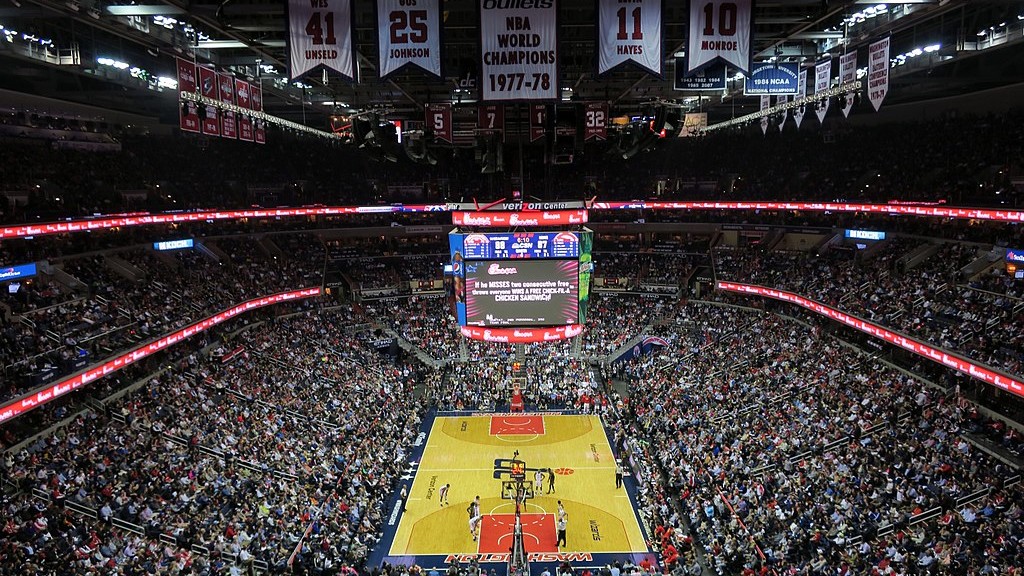The History of the NBA

The NBA (National Basketball Association) is arguably the world’s premier basketball league. It is located in the United States of America, and attracts the best players from around the world. Although leagues throughout Europe and Asia are growing, none of these come close to the NBA in terms of sheer size, popularity, and the amount of money involved.
The NBA is also one of the world’s oldest professional basketball leagues. It was founded in 1946, and has grown from strength to strength in the inflatable games for sale decades since. The NBA has a rich and varied history – one that would take hours to explain fully – which will be looked at in brief in the following article.
From humble beginnings:
The NBA was founded on the 6th of June 1946 in New York City. It was originally called the Basketball Association of America (BAA), but this name was changed after just a few years. In 1949, the BAA merged with the existing National Basketball League (NBL) to create the modern day NBA.
Although the structure and size of the NBA has evolved over the years, it’s current existence can be traced back to this merger, which occurred on the 3rd of August 1949 – about 68 years ago.
The NBL:
The National Basketball League, or the NBL, was created in 1937 by three major corporations – General Electric, Firestone, and Goodyear. The league originally had 13 teams, mostly coming from the Great Lakes region of America. Significant development and growth occurred over the next 12 years, before the NBL merged with the BAA to create the modern NBA.
Three current NBA teams can be traced back to the NBL. The Detroit Pistons were originally known as the Fort Wayner Zolloner Pistons. The Los Angeles Lakers have their roots with the Detroit Games, and the Sacramento Kings were originally knon as the Rochester Royals.
The first game in NBA history:
The 1st of November 1946 was an extremely important day when it comes to the history of the NBA. The first ever NBA game was played on this day (Although the league was known as the BAA) between the Toronto Huskies and the New York Knickerbockers. The Knickerbocker’s Ossie Schectman made the first basket in the league’s history.
The original NBA:
As noted above, the NBA was officially formed in 1949, with roots in the NBL and the BAA. The original 1949 league had just 17 teams. These came from a variety of different cities in the region. This number slowly dwindled over the following years, dropping to just 11 teams in 1950 and eight for the 1953-1954 season – the lowest number in the history of the game.
These eight teams are all present in the modern NBA, and include the Boston Celtics, the Fort Wayne Pistons, the Tri-Cities Blackhawks, the Rochester Royals, the Minneapolis Lakers, the New York Knicks, the Syracuse Nationals, and the Philadelphia Warriors. It is important to note that some of these teams have different names in the modern competition.
The introduction of the 24 second shot clock in 1954 did a lot for the games appeal. Prior to this, teams would simply hold onto the ball and play a possession game – something which wasn’t really appreciated by the fans. Under the new rule, teams had just 24 seconds to attempt a shot once they had possession of the ball. This sped the game up and caused a dramatic increase in spectator numbers, allowing the NBA to grow to what it is today.
NBA dynasties:
NBA dynasties haven’t been common, but there have been a few, mainly in the early years of the competition. These include:
- The Minneapolis Lakers 5 championships in the early 1950’s.
- The Boston Celtic’s 11 championships in 13 years between 1957 and 1969 – including eight straight between 1959 and 1966.
- The Los Angeles Lakers with 5 championships in 9 years from 1980 to 1988.
- The Chicago Bulls with 6 wins in 1991-1993 and 1996-1998.
The last three championships have been contested by the Golden State Warriors and the Cleveland Cavaliers, with the Warriors winning in 2015 and 2017, and the Cavaliers winning in 2017. Could this mark the start of a new dynasty for one of these teams?
Expansion:
In 1961, the Chicago Packers joined the NBA to become the competition’s 9th team, a move which marked the beginning of expansion. By 1968 the competition had surged to 14 teams, with 18 by 1974. Currently (as of 2017) there are 30 teams in the NBA. 29 of these teams are based in the USA, with the Canadian Toronto Raptors the only non US team in the league.
The most successful NBA teams:
The Boston Celtics (17 wins from 21 championship appearances) and the Los Angeles Lakers (formerly the Minneapolis Lakers, 16 wins from 31 championships) have been by far the most successful teams in the history of the NBA. Other notable teams include the Chicago Bulls with 6 wins, the Golden State Warriors with 5 wins, and the San Antonio Spurs with 5 wins.
What does the NBA look like today?
The modern NBA is much, much different to the original competition. The season commences in late September with training camps and pre-season training. These are followed by preseason practice matches.
Following the practice matches, the regular season kicks off in the last week of October. Each team plays 82 games – split equally between home and away fixtures – across a fast past, strenuous regular season. The NBA All-Star game takes place in February, in which the best players from each conference go head to head in an exhibition match. The regular season generally ends around the middle of April.
In late April, the NBA playoffs begin. The top eight teams in each conference compete for the league championship. The playoffs take place in an elimination format, with each team playing their designated up to seven times, aiming to win four games. The team which wins four games advances to the next round of the playoffs, while the loser is eliminated.
The last two teams standing (one from each conference) will face off in the NBA Finals. This series is also best of seven games, and is held in June. The NBA Finals are undoubtedly one of the biggest events on the American – and world – sporting calendar, and should remain so for years to come.
As for the NBA, it has a very rich history, which is why people still enjoy watching basketball games today. Cordial supporters never miss an opportunity to demonstrate their devotion and team support, and wearing fashionable and comfortable polo shirts during games is a great way to do this. A good polo shirt can be quite stylish if you are a fan of a particular team and follow the game religiously or if you are a casual sports lover who likes to watch the games occasionally. Due to the numerous NBA teams available, you will be able to find a team with your preferred players.
But if you want to get even more uniqueness, you should try to order custom-made polo shirts with your team’s logo or color on them! Do not hesitate to place your order, get the right clothes for a game, and support your team! Get in touch now – we’re here to help you at every stage.
